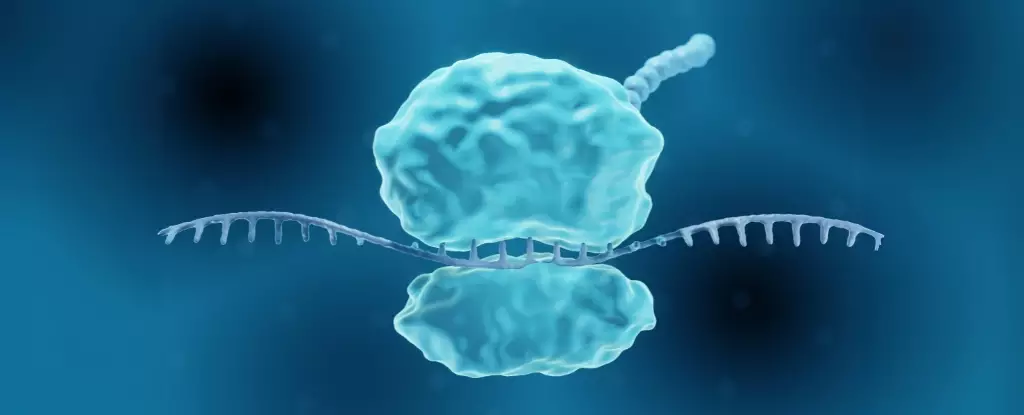The discovery of a genetic mutation providing near-permanent immunity to viruses upends our understanding of human susceptibility and resilience. For decades, the notion that viruses can penetrate the defenses of even the strongest immune systems seemed inviolable. Now, researchers uncover an anomaly—a mutation in the interferon-stimulated gene 15 (ISG15)—that grants individuals a subtle yet robust form of protection. While this mutation causes a mild, persistent inflammation, it surprisingly prevents severe illness, revealing an elegant biological balance between immune activation and disease prevention. This challenges the prevailing narrative that immune activation must be tightly regulated to avoid harmful inflammation, opening new avenues for therapeutic innovation. However, leveraging this mutation as a universal solution poses significant scientific, ethical, and political questions.
Harnessing Nature’s Superpower Through Cutting-Edge Technology
What makes this breakthrough particularly compelling is the potential to mimic the mutation’s effects artificially. Using advanced mRNA-inspired techniques, scientists have demonstrated their capacity to temporarily induce a similar antiviral state in lab animals. By instructing cells to produce specific proteins that attack viruses at multiple stages—without triggering the destructive inflammation typical of the natural mutation—researchers are edging closer to a universal antiviral strategy. Such an approach offers the tantalizing possibility of providing rapid, short-term immunity across populations, especially during emergent pandemics. It’s an “off-the-shelf” concept that could bridge the time gap until virus-specific vaccines are developed, making it an attractive option for frontline health responders and vulnerable populations alike.
The Practicalities, Limitations, and Ethical Dilemmas
Despite the promise, the current innovations remain in their infancy, fraught with practical challenges. The transient nature of the induced immunity—lasting only a few days—limits immediate application, especially compared to traditional vaccines that confer longer-term protection. Nonetheless, short-term immunity could serve as an invaluable tool during outbreaks, particularly before vaccines tailored to specific pathogens are available. Yet, the technical hurdles surrounding targeted delivery of mRNA to human cells present formidable obstacles. The complexity of ensuring precise, safe, and effective treatment remains unresolved, underscoring how far we still have to go before this becomes a mainstream protective measure.
More troubling is the broader societal context. The same mRNA platform that underpins this innovation has already become a focal point for political debate and widespread skepticism. Due to misinformation, concerns over safety, and ideological resistance, public acceptance could significantly hinder development and deployment. This politicization threatens to slow or even obstruct potentially life-saving advances, exposing a fundamental flaw in how society handles scientific innovation. If these promising therapies are to reach their full potential, policymakers and scientists must confront these stigmas head-on, fostering transparent dialogue rooted in scientific integrity rather than fear-driven narratives.
Ethical Considerations and the Future of Preventive Medicine
Allowing humans to tweak their immune responses deliberately raises profound ethical issues. Should we harness the body’s natural balance of immune activation for widespread use? What are the implications for individuals with underlying health conditions or genetic predispositions? The line between therapeutic and enhancement interventions blurs, prompting questions about consent, equity, and long-term consequences. Focused on a liberal ethos, this innovative approach should prioritize equitable access and careful regulation—emphasizing that such powerful technology must not create disparities or unintended health crises.
There’s also the danger of over-reliance on technology that short-circuits natural immune processes. While the short-term benefits are alluring, long-term impacts—such as potential immune exhaustion or unforeseen genetic effects—remain uncharted. Society must scrutinize whether quick solutions like temporary vaccine-like interventions risk undermining more sustainable, holistic public health strategies. Balancing technological progress with social responsibility remains paramount as we navigate this new frontier.
In essence, the road ahead is both promising and perilous. This breakthrough signals a paradigm shift in how we think about combating infectious diseases, but it must be approached with caution, transparency, and an unwavering commitment to ethical principles. The challenge isn’t just scientific; it’s societal. Only through careful dialogue, responsible innovation, and inclusive policy can we harness this extraordinary discovery to serve humanity’s best interests.


Leave a Reply